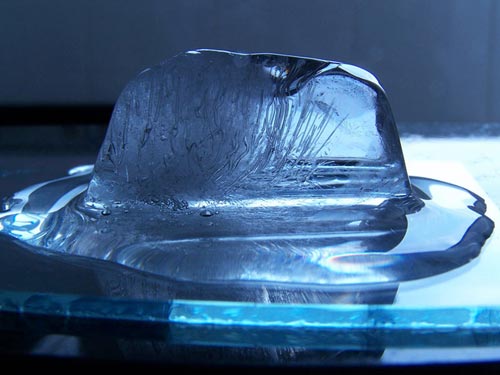 by PRESTON MACDOUGALL April 22, 2009
We've not just been inspired by the heavens, but been headed that way ever since. Eventually we won't have any choice. Astrophysicists have used the same laws of gravity, in conjunction with our new Promethean knowledge of the nuclear processes that make the stars shine, to predict that when our Sun starts to run out of hydrogen it will turn into a red giant - hundreds of times its current size. 
Or does it. There is also plenty of scientific uncertainty in the much more immediate temperature forecast for planet Earth. I'm not talking about whether or not I'll be able to take my Tommy Bahama outfits out of storage next week, but whether or not all the Bahamas will still be above water in a hundred years. It won't improve the certainty of the models, but it just might reduce some of the confusion, if the public understands that global warming and the causes of it are two logically separable problems. The first is largely an experimental challenge, and the second is primarily a theoretical one. All theories, leading or fringe, of what might cause global warming need to be tested with computational and experimental models, but even those are logically separable problems. Science works best when big problems are broken down into small problems, and groups work on them independently - without political pressure. Even under the best conditions, science has its ups and downs. But it always seems to move forward. For the sake of less argument, let's assume that the in vogue theory is correct; that the increasing levels of atmospheric CO2, due to the accelerating combustion of fossil fuels since the dawn of the industrial age, results in a "greenhouse effect" that is causing global warming. This geochemical theory, postulated with atomic detail by Swedish chemist Svante Arrhenius, has survived over 100 years of dismissive skeptics and over-zealous supporters, so it deserves some respect. We still have the experimental problems of accurately measuring global temperatures, as well as concentrations of CO2, both in the atmosphere and dissolved in the oceans. None of these are cheap, or easy. Cost overruns in NASA's ambitious, but scientifically essential plans to replace the aging fleet of Earth-observing satellites are threatening its political support. And just last month, the satellite that was intended to provide decades of high-resolution mapping of CO2 concentrations around the planet unexpectedly fell into the Pacific Ocean, where it was not equipped to measure concentrations of dissolved CO2 or related carbonate ions, even if it survived the splash intact. This was a painful (and expensive) reminder that the "what goes up, must come down" theory still applies to satellite launches when it is in conjunction with the "accidents do happen" theory. It seems that the rocket launch was perfect, and the satellite would have reached orbit if the explosive bolts securing the heavy metallic shield had detonated on cue. They did not, "oh, oh!" was heard in the control room, there was a less-than-equal and opposite sustained force opposing gravity, kerplunck. If satellites are not your thing, and you don't mind working with superacids, there are experimental projects underway in organic chemistry labs that seek to recycle excess CO2 in the atmosphere by recombining it with water and the copious amounts of energy that surround us in the form of light and heat, to synthesize methanol and other valuable fuels - out of thinly carbonated air! This ambitious research is being pioneered by George Olah's group, in the Loker Hydrocarbon Research Institute at the University of Southern California. Like Svante Arrhenius, George Olah is a recipient of the Nobel Prize in Chemistry - in Olah's case for pushing the envelope of carbon chemistry - so even though his ideas may sound too good to be true, they deserve some respect. You'd be surprised what can
be achieved when the laws of chemistry and thermodynamics operate
in conjunction with the "necessity is the mother of invention"
theory.
On the Web:
E-mail your letters & opinions to editor@sitnews.us SitNews ©2008 Stories In The News Ketchikan, Alaska |